Last Chance to Catch NYC's Holiday Notalgia Train
We met the voices of the NYC subway on our nostalgia ride this weekend!


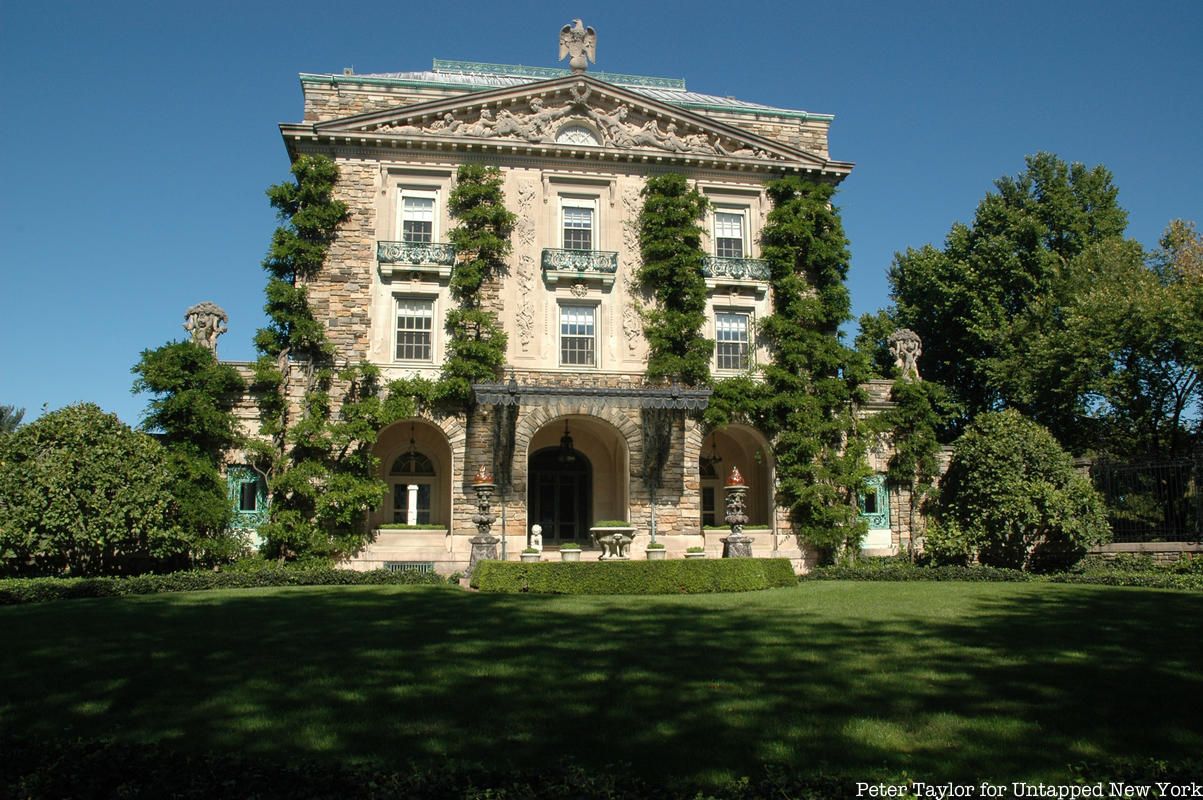
The Hudson Valley is full of incredible estates and historic houses. You may have previously seen our coverage of Kykuit: The Rockefellers’ Gilded Age Gem in the Hudson River Valley and The Ruins of Northgate, the Cornish Estate in the Hudson Valley. Presented below are thirty sites scattered throughout the Hudson Valley. These Hudson Valley estates were home to artists, presidents, and robber barons and tell the story of the United States (and New York) from its humble Dutch origins through the Revolutionary War and well into the Victorian Era. These Hudson Valley estates will keep you busy for years to come between attending guided tours and wandering around acres of idyllic landscapes.
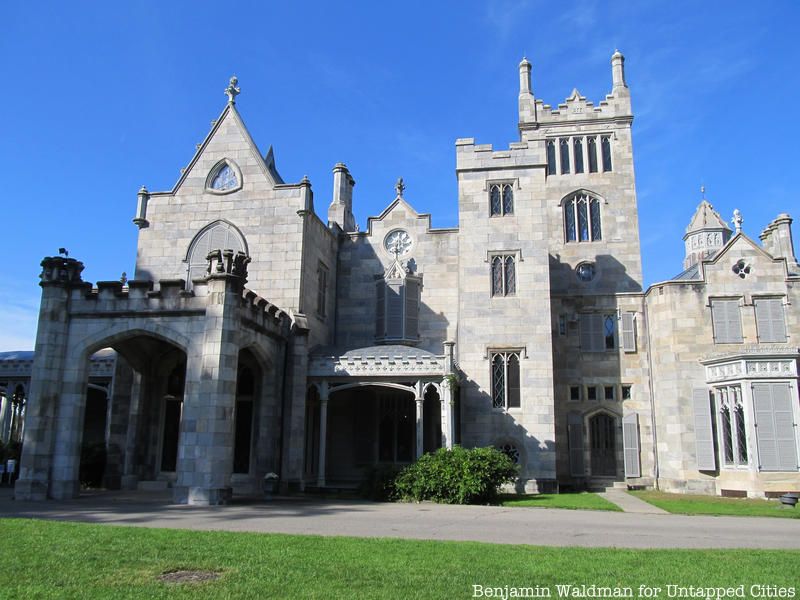
A masterpiece by Alexander Jackson David, Lyndhurst was originally constructed in 1838 for William Paulding, Jr., a former mayor of New York City. The Tarrytown, New York estate is considered to be one of the finest Gothic Revival mansions, and likely the most famous of the Hudson Valley estates. Its current incarnation is the result of Jay Gould, the railroad tycoon, and his daughters who were the final owners of the estate before it was donated to the National Trust for Historic Preservation.
After the mansion was acquired by the Trust it was opened to the public. It has also been used as a setting in a number of films and television shows including HBO’s The Gilded Age and Winter’s Tale. A long-abandoned bowling alley on the property was recently restored and is now open for private events!
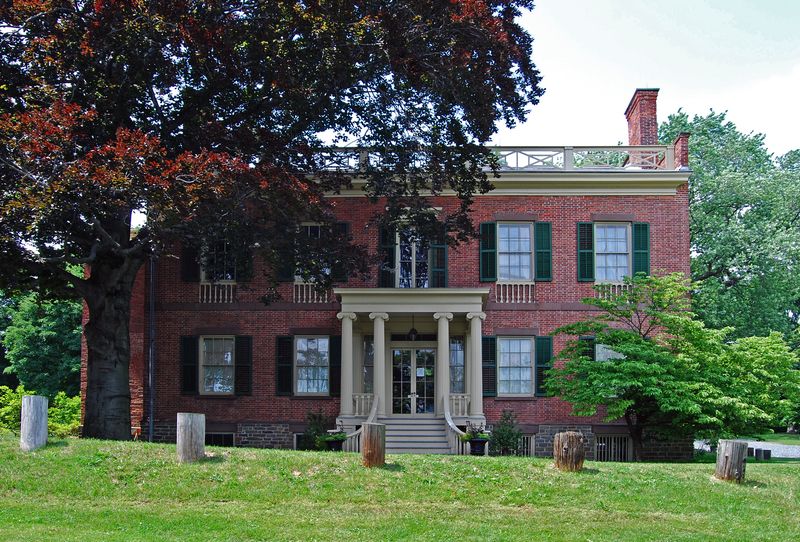
The Ten Broeck Mansion in Albany was built for General Abraham Ten Broeck and his wife, Elizabeth Van Rensselaer from 1797 to 1798. Both Ten Broek and Rensselaer were part of influential Dutch families who were among the first Europeans to settle in the area. The home’s design is attributed to local architect Phillip Hooker. The couple named the home “Prospect.”
In 1848, Thomas Worth Olcott, president of the Mechanics and Farmers Bank of Albany, purchased the home, He renamed it Arbour Hill, the 18th-century name given to the hill the house was built on. The Olcott family donated the Mansion to the Albany County Historical Association in 1948. Today, the ACHA gives tours of the mansion and garden and provides education programs for the community.

Kykuit, meaning lookout in Dutch, was home to four generations of the Rockefeller family. It was originally designed by Delano & Aldrich in 1913 for John D. Rockefeller. The estate has something for everyone, beautifully landscaped grounds and gardens, outstanding interior rooms, and a modern art collection worthy of a museum.
The Rockefellers actually helped to found the Museum of Modern Art, and their affinity for it shows through in the collection at Kykuit. Throughout the house and grounds, visitors will spot works by Picasso, Chagall and Warhol, Brancusi, Calder, Noguchi, and more. Historic Hudson Valley, which operates Kykuit as well as other Hudson Valley sites, runs a number of different tours of the estate and grounds.
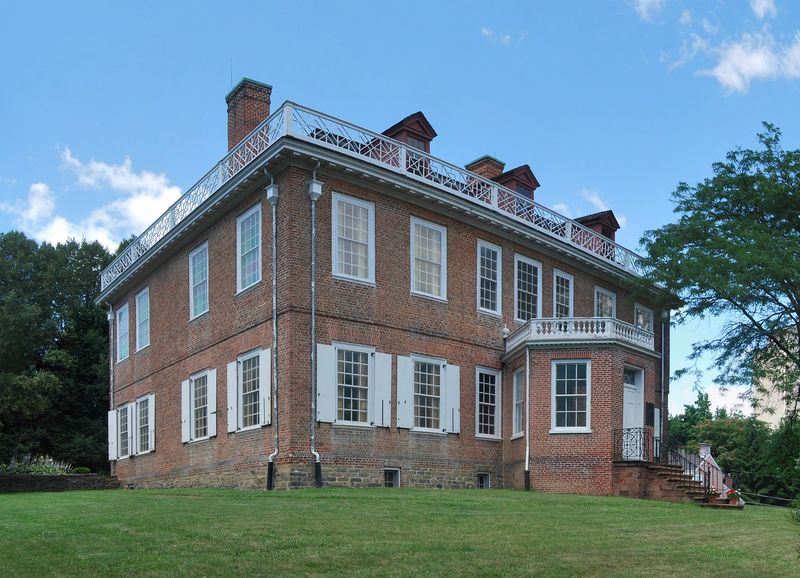
The Schuyler Mansion was home to Revolutionary War general and US Senate Philip J. Schuyler, his wife Catharine Van Rensselaer, and their eight children. The Schuyler family lived at the home from 1763 through 1804. A very special event was hosted at the home in 1780, the wedding of daughter Elizabeth to Alexander Hamilton.
The grounds of the estate once boasted an orchard, a formal garden, and a working farm. Built on a bluff overlooking the Hudson River in Albany, the home is now part of the Schuyler Mansion State Historic Site where visitors can take part in guided tours and year-round public programs.
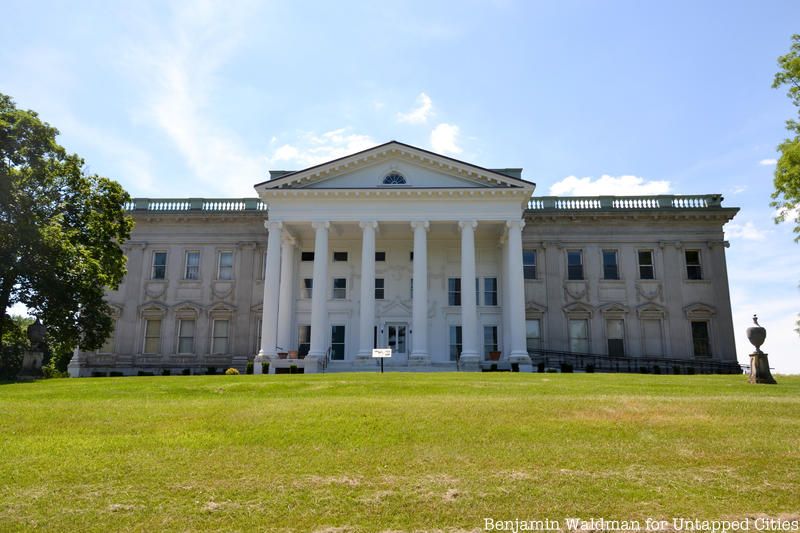
Staatsburgh is one of New York’s most impressive mansions. The house was constructed in the 1890s by McKim, Mead, and White for Ogden Mills and his wife Ruth Livingston Mills. Completed within a year, the house contains 65 rooms, 23 fireplaces, and an incredible 14 bathrooms. The mansion was one of five homes owned by the Mills. The family mainly sojourned at Staatsburgh in the fall when they would entertain as many as eighty guests at a time.
In 1938, the mansion and 192 acres were donated to the state of New York. The mansion is now open for tours and special events throughout the year. You can check out what’s coming up here.
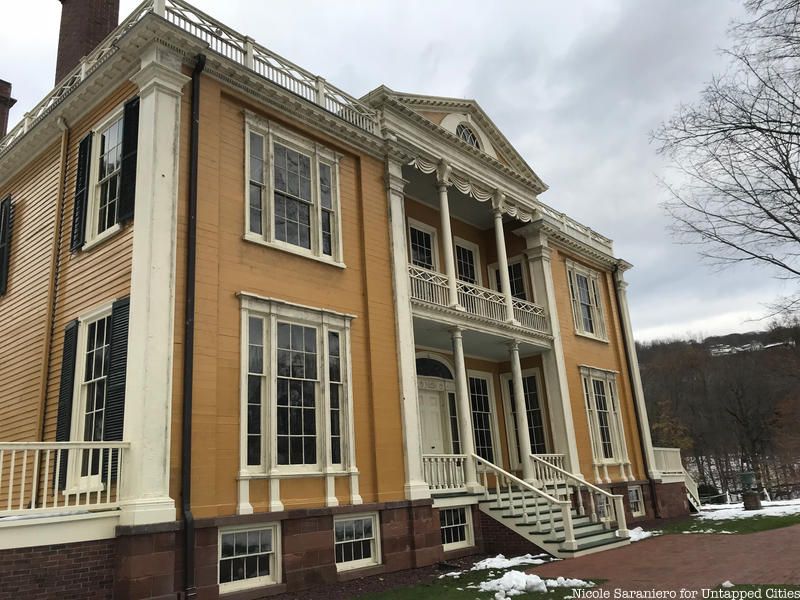
Located in Garrison, New York, Boscobel is considered to be one of the finest examples of Federal-style architecture in New York. The house was constructed between 1804 and 1808 on a 250-acre riverfront site and was commissioned by States Dyckman.
In 1924, Westchester County purchased the property to turn it into a park. However, by the mid-1950s the house was slated for demolition. Ultimately, the house was dismantled and stored in a barn for a year until a new site (15 miles away) was found and reconstructed.
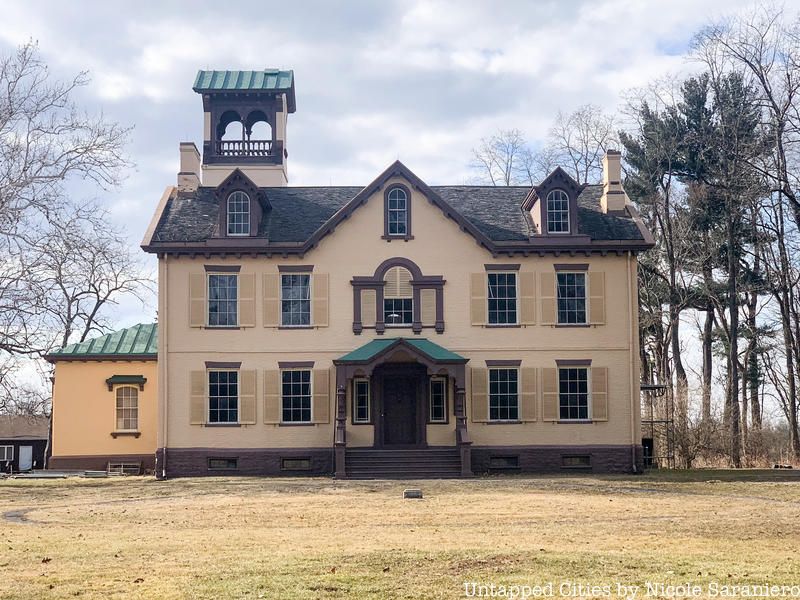
Former U.S. President Martin Van Buren purchased Lindenwald in 1839, though the original house was built in 1797. He lived there after his Presidency until his death. The house is located in Kinderhook, New York, the town where Van Buren was born. Van Buren used the grounds of his estate to demonstrate progressive agriculture. These new and improved methods showed how better farming could be achieved without the use of slave labor, in the lead-up to the Civil War.
Lindenwald was renovated by architect Richard Upjohn from 1849 to 1850. Upjohn’s work can be seen throughout New York City. He most famously designed Trinity Church. Today, the house is operated by the National Park Service, which runs daily tours of the estate.
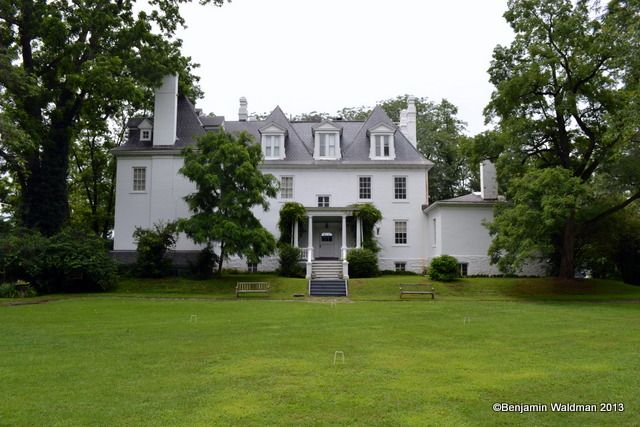
Clermont was constructed between 1740 and 1750 by Robert Livingston, Jr. The original house was burned by the British because Margaret Beekman Livingston refused to assist them during the Revolutionary War. The current structure, located in Germantown, New York, was designed by Margaret and her son Robert (who co-invented the steamboat and administered the oath of office to George Washington on the steps of Federal Hall).
Livingston descendants remained at the estate throughout the twentieth century. They donated the land to the state in 1962. Today, the estate is comprised of the mansion and over 500 acres of landscaped gardens, meadows and woodlands.
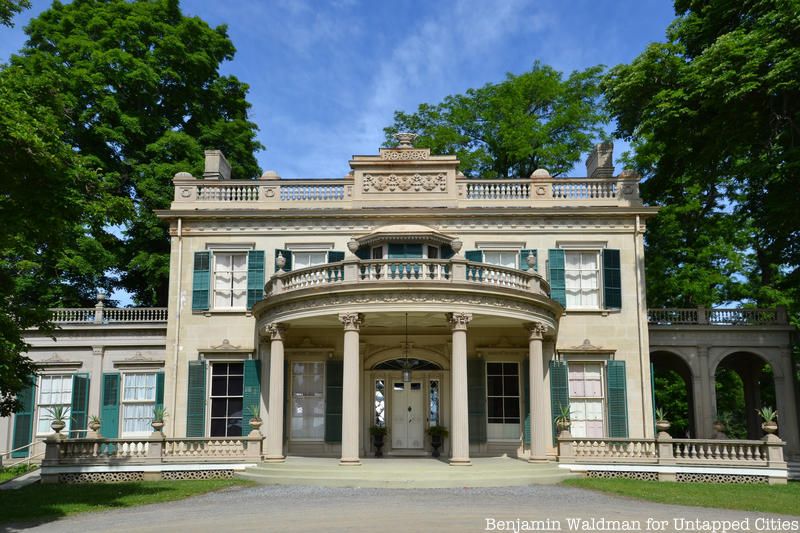
Montgomery Place was constructed in 1803 and is located in Annandale-on-Hudson. It was designed by Alexander Jackson Davis in the Italianate style for the Livingston family. Chancellor Livingston, who administered the oath of office to George Washington as the first president of the United States, lived in an earlier house on the site that was razed by the British during the Revolutionary War.
The house is open to the public through guided tours. Gardens and woodland trails culminating in vibrant cascades, which are accessible to the public for free, occupy most of the remainder of the 380-acre property.
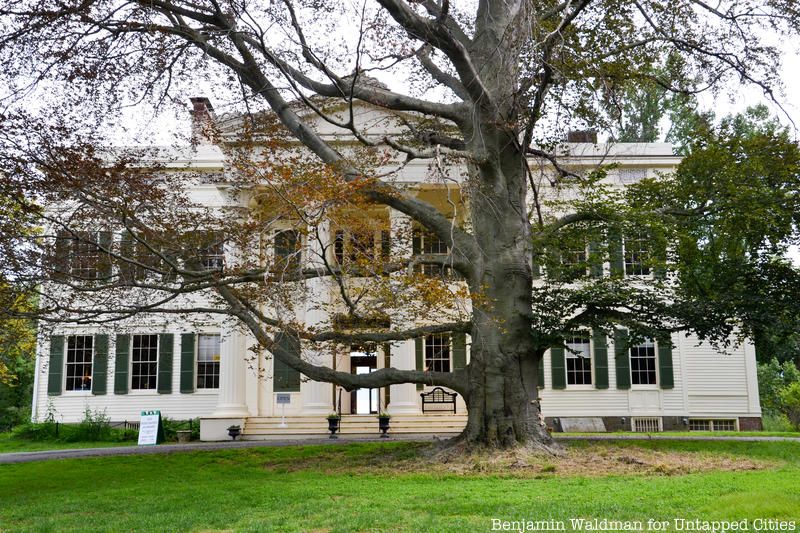
The Jay Heritage Center is comprised of the 1883 Peter Augustus Jay House and the 1907 Van Norden Carriage House. The 23-acre property is the boyhood home of John Jay and is a stop on Westchester County’s African American Heritage Trail.
The house was designed in the Greek Revival style by Edwin Bishop for John Jay’s son on the site of his father’s childhood home. Guided tours show off the house on its history, which include connections to James Fenimore Cooper, the Triangle Shirtwaist Factory, and Paleo-Indians.
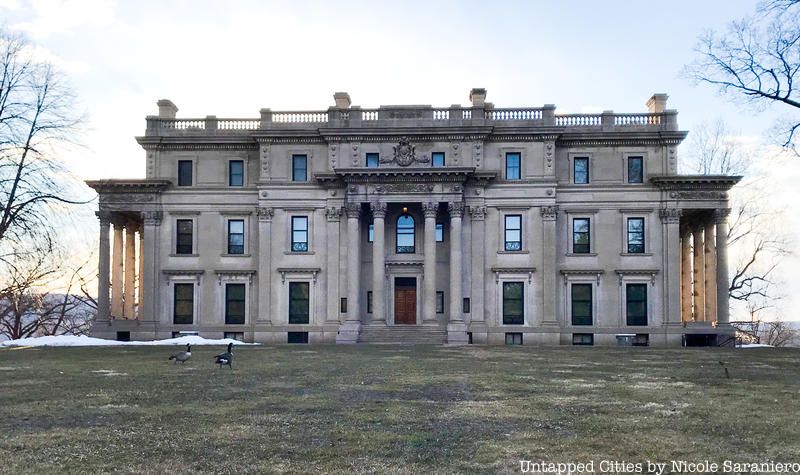
Hyde Park is one of many Vanderbilt estates in New York and one of the oldest Hudson Valley estates. Much of its 200-plus acres and historic buildings are open to the public as the Vanderbilt Mansion National Historic Site. The centerpiece of the site is fifty-four room mansion designed by McKim, Mead & White.
The mansion was constructed between between 1896–1899 and designed in the Beaux Arts style. The house was designed with all of the modern amenities only a Vanderbilt could afford at that time, including plumbing, forced hot air, central heating, and electric lighting. It was Franklin Delano Roosevelt who convinced the Vanderbilts to donate the property to the National Park Service, enabling visitors today to marvel in its grandeur.
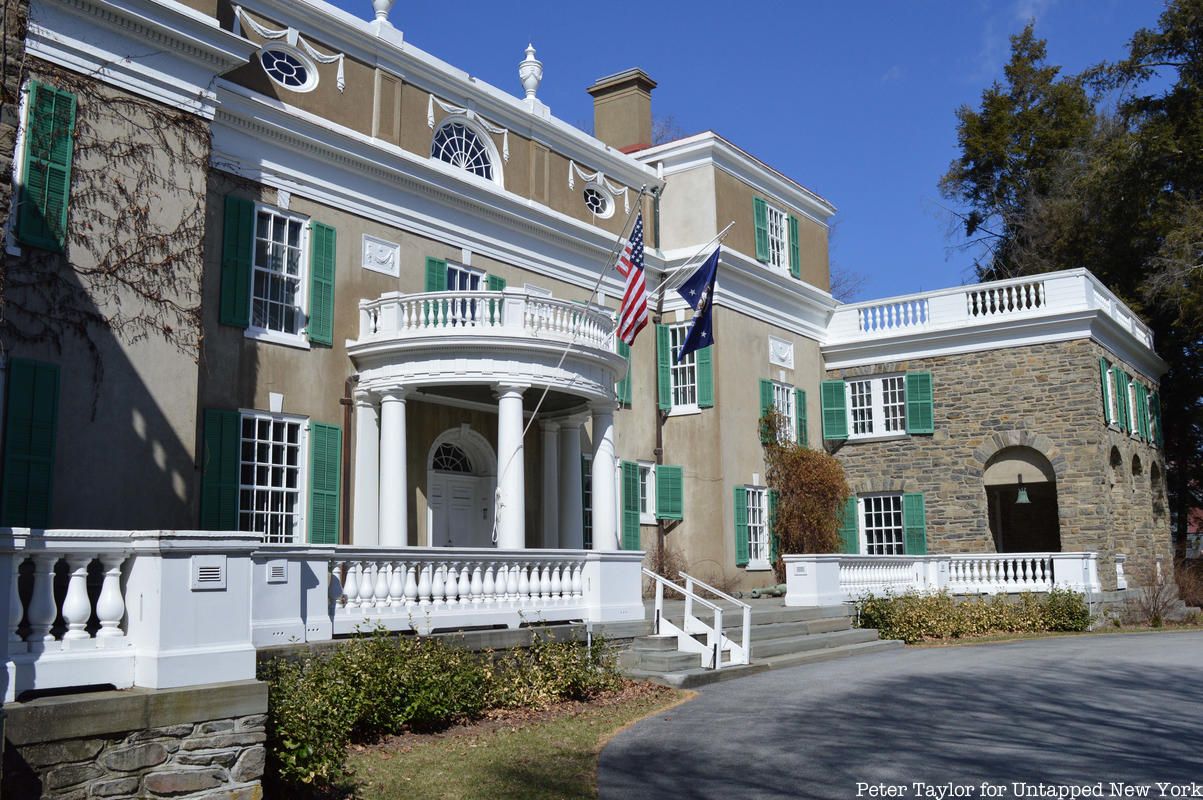
The Home of Franklin D. Roosevelt National Historic Site is where you’ll find Springwood, Franklin Delano Roosevelt’s birthplace, home, and final resting place. The estate, located in Hyde Park, was purchased by Franklin Delano Roosevelt’s father, James, in 1866.
In 1915, FDR and his mother Sara began renovating and enlarging the house. The result of their work is the imposing Italianate mansion that visitors see today. In 1943, Franklin Delano Roosevelt donated Springwood to the American people and after his death it was transferred to the National Parks Service.
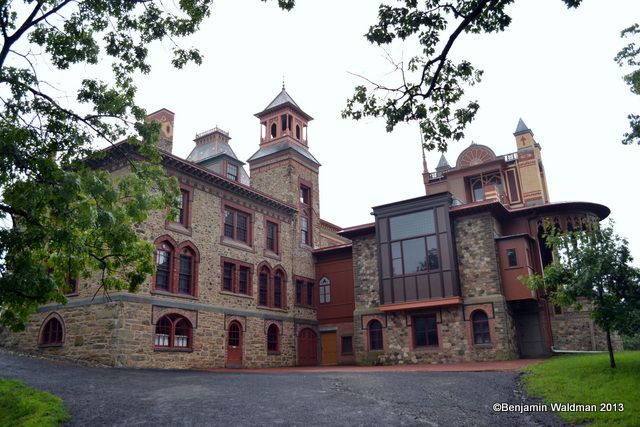
Olana is the home of the famed Hudson River School painter, Frederic Edwin Church. Church designed the home with help from Calvert Vaux. The house is located on the top of a 250-acre estate with stunning views of the Hudson Valley that he regularly painted.
Guided house tours reveal a nineteenth-century Victorian treasure, reminiscent of Mark Twain’s Hartford home. Dozens of paintings by Church and his Hudson River School colleagues are on display. Additionally, there are Old Master paintings, pre-Columbian artifacts, Persian tiles, and even a peacock to behold.
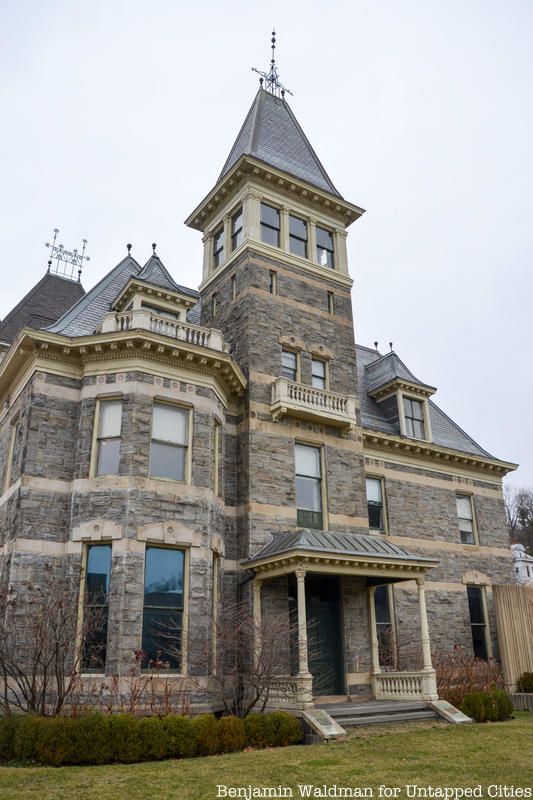
Glenview is a Victorian mansion that is located on the grounds of the Hudson River Museum in Yonkers, New York. The house was constructed between 1876 and 1877 for John Bond Trevor, a New York financier. It was designed by architect Charles W. Clinton. In the 1920s, the estate and its grounds were sold to the City of Yonkers, which turned it into a park.
The Hudson River Museum took over the house in 1948 and later expanded into an adjoining building. Today, the mansion has been restored to its turn-of-the-century brilliance. Visitors can tour the home’s six fully restored period rooms.
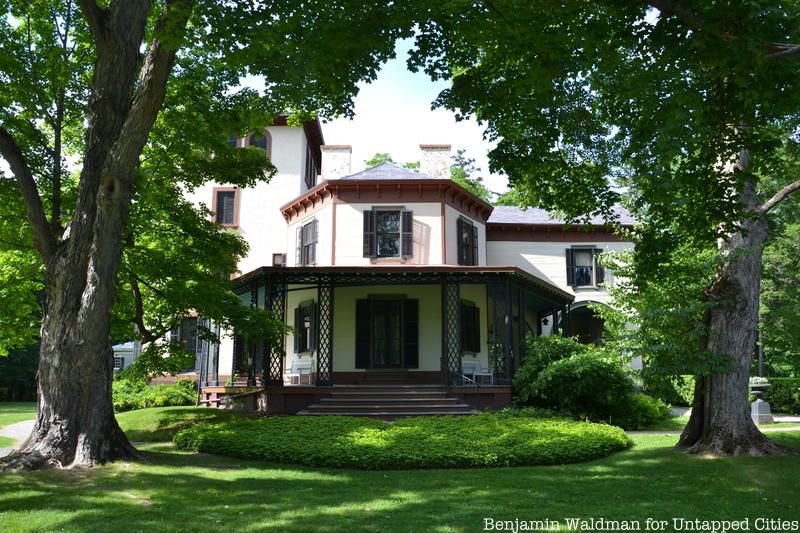
Locust Grove’s most famous resident was Samuel F. B. Morse, the inventor of the telegraph. The name of the Poughkeepsie estate is derived from the locust trees planted by Henry Livingston Jr., the estate’s first resident.
Alexander Jackson Davis designed the Italianate-style
mansion for Morse in 1851. Almost no furnishings remain from when Morse lived at the house, but you can view an informative exhibit on the inventor and a collection of some of his paintings in a nearby visitor center.You can also explore the estate’s 200 acres of landscaped grounds and five miles of hiking trails.
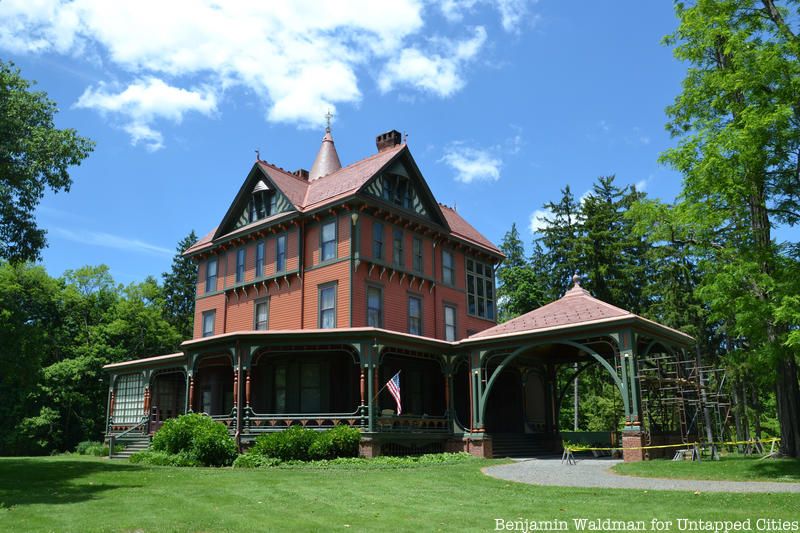
Thomas Suckley, a descendant of the Livingston and Beekman families, commissioned an Italianate villa, designed by architect John Warren Ritch, in 1852. The estate was named Wilderstein, meaning wild man’s stone in reference to a nearby Indian petroglyph, which can still be visited.
Thirty years later, Suckley’s son transformed the two story villa into an elaborate Queen Anne style country house complete with a dramatic five story circular tower. Wilderstein’s final resident was Margaret (Daisy) Suckley, a cousin and confidante of Franklin Delano Roosevelt. It was Suckley who gave Roosevelt his famous black Scottish terrier Fala. Calvert Vaux and Joseph Burr Tiffany helped make Wilderstein a must see.
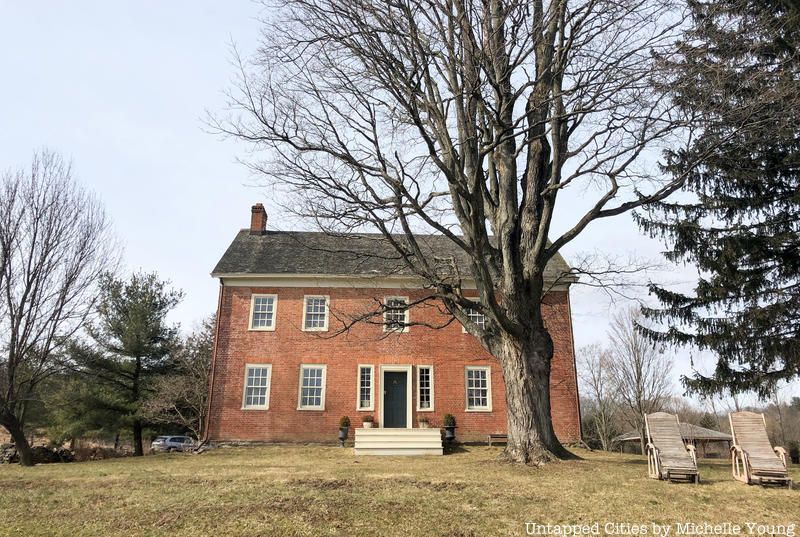
Some Hudson Valley estates are still privately owned, and Windrift Hall is one of them. The Hall can be rented for events like weddings or yoga retreats, or just a stay with friends. The 1795 historic manor sits atop a hill surrounded by 14 acres of nature, at the end of a long and winding road. You’ll quickly be transported elsewhere.
This is well-loved historical home, restored with the right balance to keep it feeling well-worn and imperfect, yet warm and welcoming. You can feel how this house has grown and adapted over the centuries, embracing what’s to come.
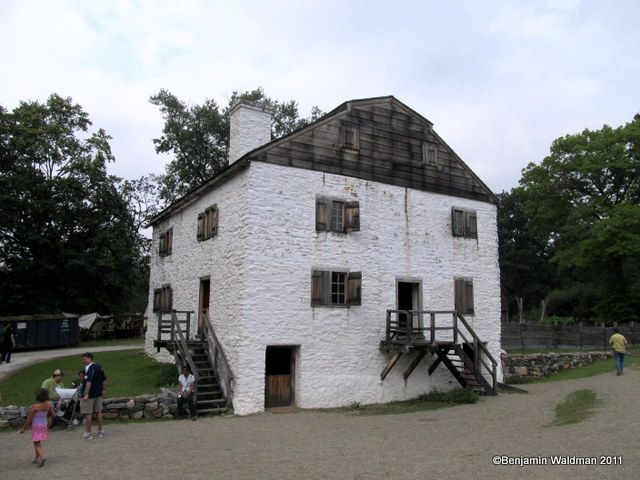
Philipsburg Manor was created in 1693 through a royal charter granted to Frederick Philipse I. His 52,000-acre manor remained intact through 1779. Today, visitors can “wander along a picturesque woodland path and enter the year 1750″ and witness what was ” a thriving farming, milling, and trading center owned by the Philipses.”
The Manor provides numerous demonstrations in its gristmill, garden, and farm, which are engaging and informative experiences for visitors of all ages. Inside the manor, guests can handle reproductions of period artifacts and learn more about the Philipse family and the enslaved community.
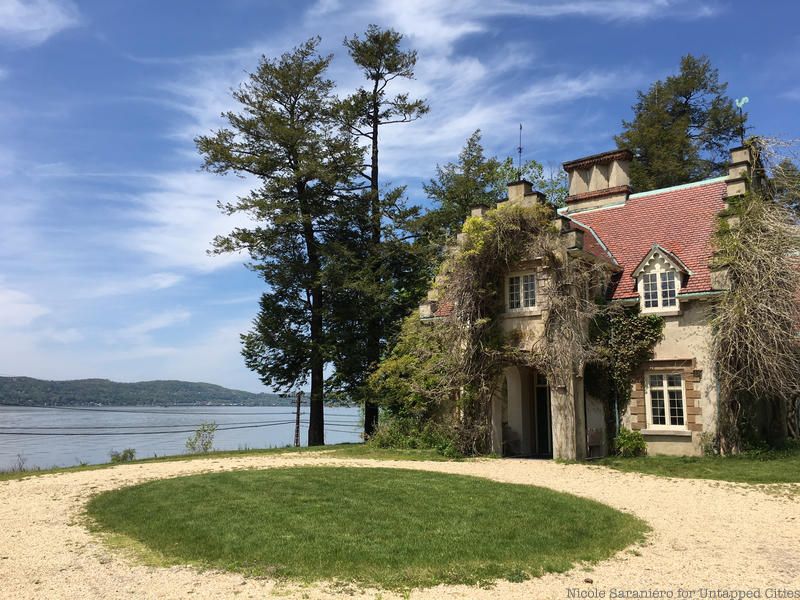
In the 1830s Washington Irving purchased an eighteenth-century tenant farmhouse, which he remodeled into a Gothic and Spanish Revival Cottage called Sunnyside. Irving even added a tower inspired by the Spanish architecture he fell in love with while serving as an Ambassador to Spain.
The house, which Oliver Wendell Holmes, Sr. said was “the best known and most cherished of all the dwellings” in the United States after Mount Vernon, remained in the Irving family until 1945. John D. Rockefeller, Jr. purchased the house and assisted with its preservation. The house where Irving died is accessible by guided tours.
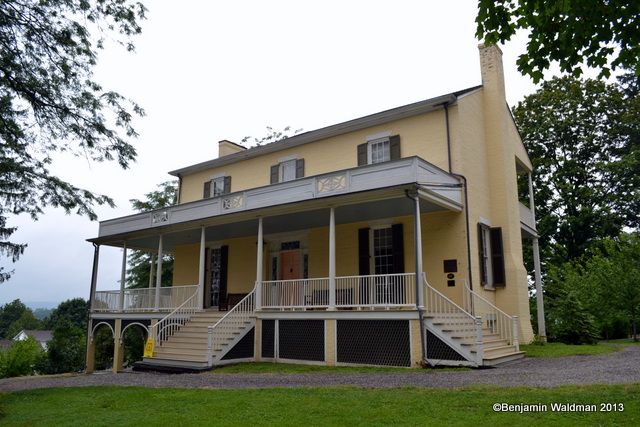
Cedar Grove is the home of painter Thomas Cole. Cole was the founder of the Hudson River School, the American art movement known for its realistic, yet romantic, portrayal of the American landscape. Cedar Grove belonged to Cole’s uncle-in-law, John A. Thomson, who rented and then sold Cole property for a house and studio.
Cole painted some of his most famous paintings on the site. A selection of paintings and studio materials are on display to visitors. In November 2022, work began on a $1.8 million dollar project to build a new visitor’s center and make improvements to existing infrastructure.
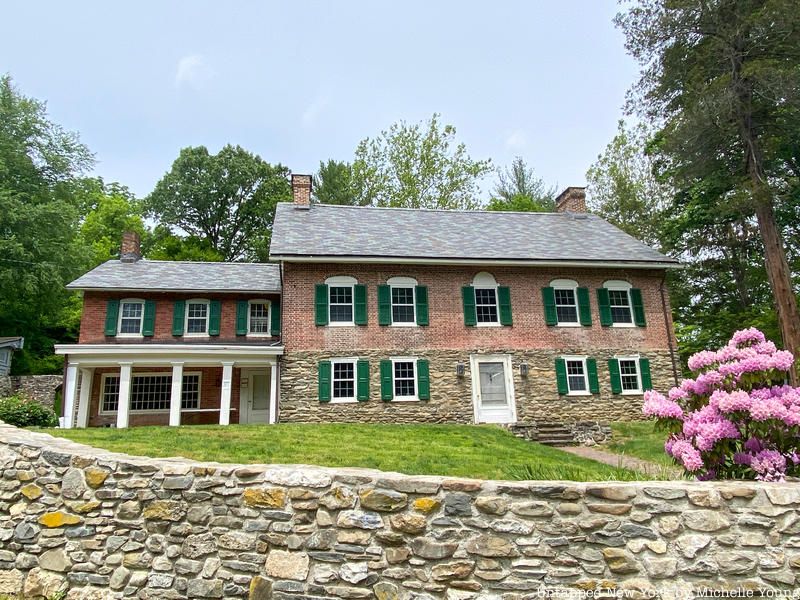
The house, which is the earliest known surviving Jewish house in the United States, has been restored to showcase its unique residents. The adjacent mill provides interesting paper-making
demonstrations.As of this publication in December 2022, the home is currently closed to the public until further notice.
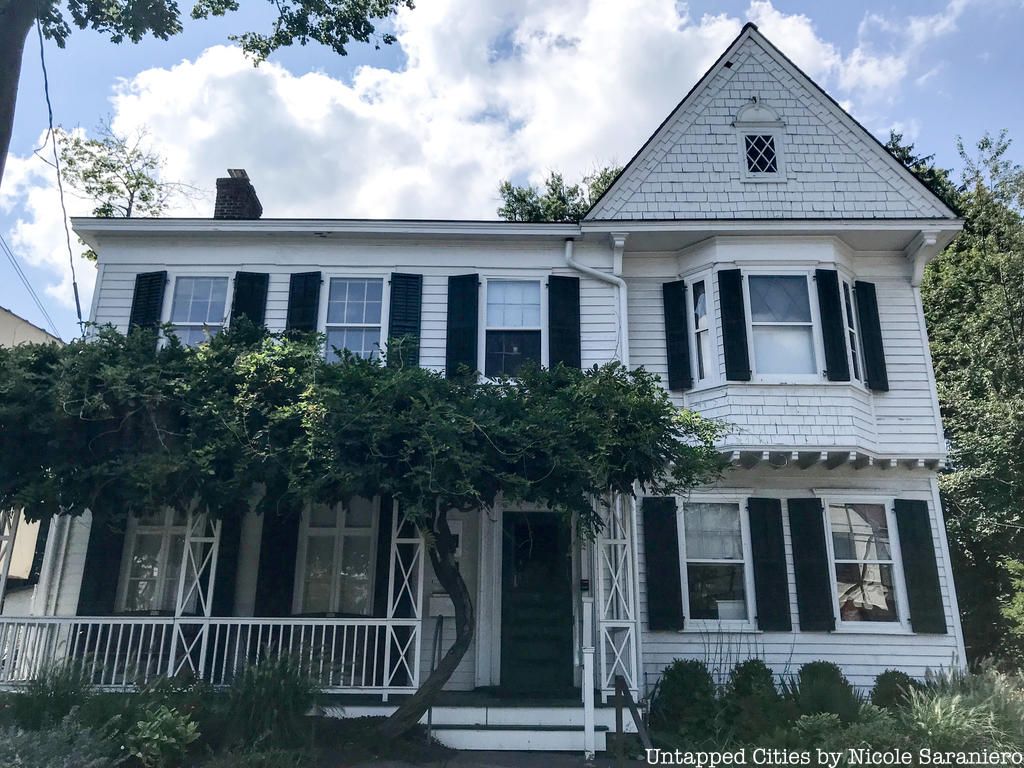
The Edward Hopper Art House is located in Nyack and is Hopper’s birthplace. The house was constructed by Hopper’s grandfather in 1858 and Hopper lived there from his birth in 1882 until 1910. Since 1971, when the house was restored by local citizen groups, the Edward Hopper Art House has been a not-for-profit art center.
The Center’s mission is “to preserve and maintain the birthplace and boyhood home of artist Edward Hopper… to serve as a resource for scholars, art historians, and art lovers worldwide; to function as a multi-arts center for artists to display their work in all media, and to encourage and nurture community engagement with the arts.” Check out one of its many exhibitions or public programs.
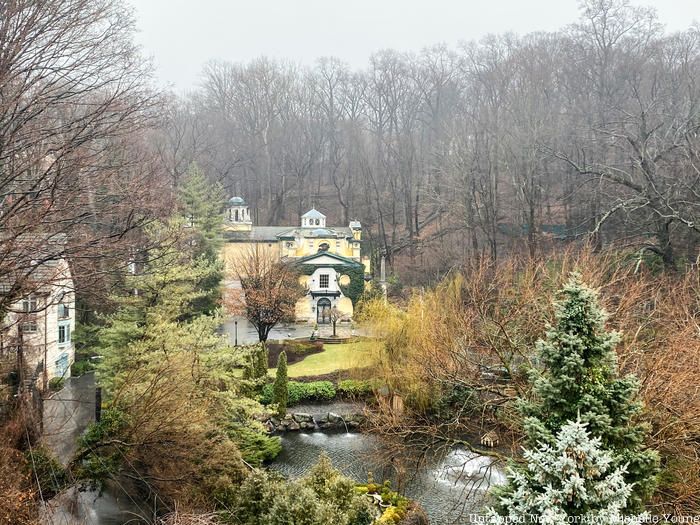
Ever Rest is the Jasper Cropsey Home & Studio and is operated by the Newington-Cropsey Foundation. William Saunders, a local industrialist, constructed the house in the 1830s in the Carpenter Gothic style. The house was purchased by the Cropseys in 1887. Jasper Cropsey renovated the house and constructed a studio for himself with a “large windowed cupola and full-length window facing north, both designed to give the artist as much natural light as possible.”
Ever Rest remained in the family until the 1970s when it was it was taken over by the Newington-Cropsey Foundation. Today, the house is open to visitors through guided tours. An adjacent art gallery is open for tours as well.
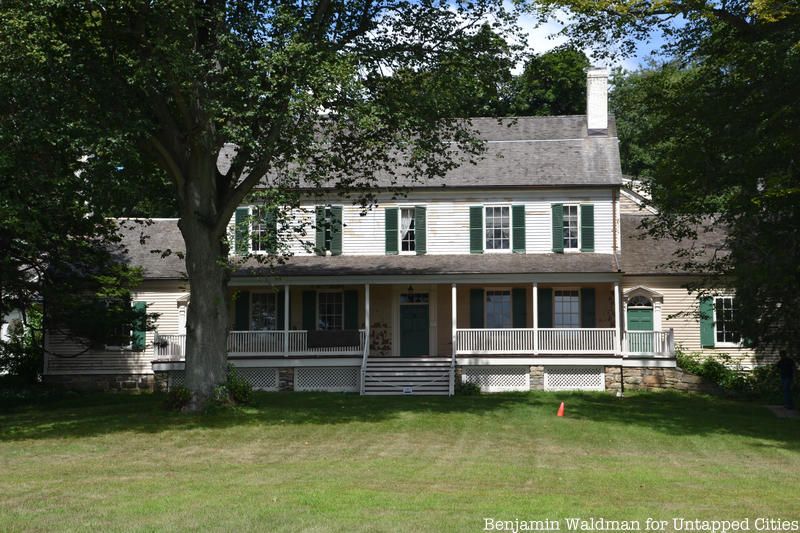
The John Jay Homestead was home to one of this country’s Founding Fathers, the President of the Continental Congress, the U.S. Secretary for Foreign Affairs, the first Chief Justice of the U.S. Supreme Court, and the second governor of New York State, John Jay. The farmland had been purchased by Jay’s grandfather in 1703 and in 1799 Jay constructed a “comfortable” twenty-four-room house on the property. In 1801, after retiring from his life in politics, Jay retired to the farmhouse.
In 1958, the house and thirty acres of land were purchased by Westchester County (then transferred to New York State), which opened it to the public in 1964 as the John Jay Homestead State Historic Site. Guided tours allow visitors to view twelve beautifully furnished period rooms, restored to an 1820’s appearance. The public can also wander around the homestead’s sixty-two acres, which encompass formal gardens, rolling meadows, and a number of 19th-century farm buildings.
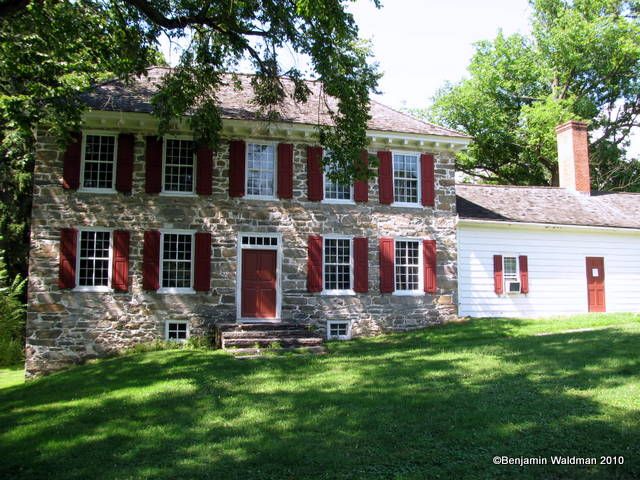
Knox’s Headquarters State Historic Site was originally constructed in 1754 as the country estate of John and Catharine Ellison. During the Revolutionary War, the estate served as a military headquarters for the likes of General Henry Knox, General Nathanael Greene, and General Horatio Gates.
Today, a visit to the house allows visitors to explore how the Ellisons and other families lived in the area during the 18th and 19th centuries as well as its prominent Revolutionary War connections.
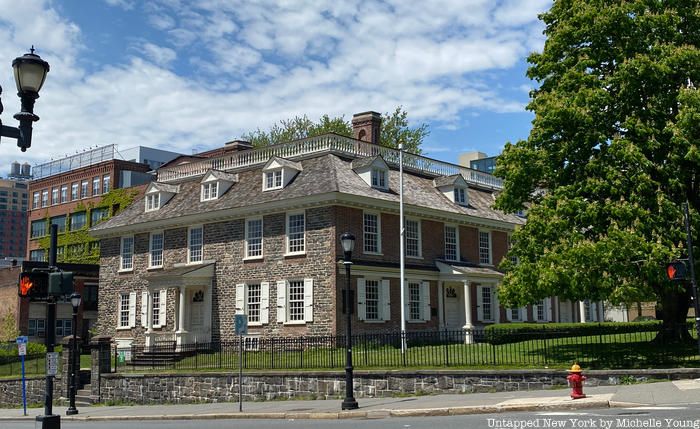
Construction on Philipse Manor Hall began in 1682 by Frederick Philipse, Stephanus Van Cortlandst’s son-in-law. The Philipse family remained on the estate through the Revolutionary War. Philipse was a loyalist, who along with two hundred other colonial New Yorkers signed a “Declaration of Dependence” supporting Kings George III. As a result, he was placed under arrest. He eventually fled back to England.
In 1868, the manor house became the Yonkers Village Hall and in 1872, the first City Hall for Yonkers. Today, Philipse Manor Hall serves “as a museum of history, art, and architecture, as well as host to community organizations, meetings, educational programs, and special events.”
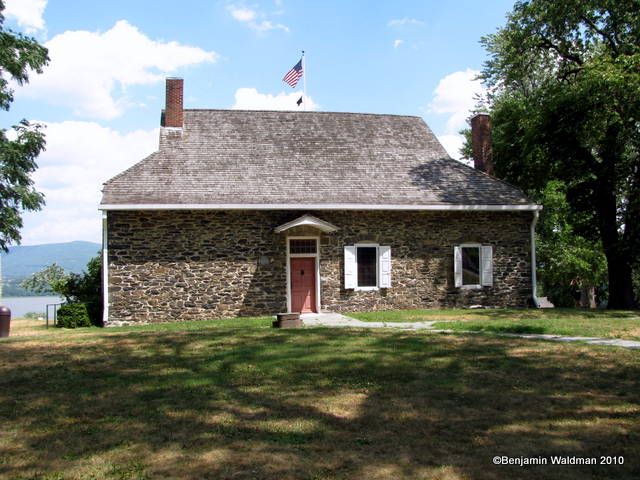
Washington’s Headquarters State Historic Site was the first publicly owned historic site in the country. The house was constructed in 1750 by Jonathan Hasbrouck. During the Revolutionary War, the house served as George Washington’s headquarters.
During the time Washington was stationed there, he rejected the idea of being crowned king, defeated the Newburgh conspiracy, thereby preventing a coup d’etat, and created the Badge of Military Merit, which would ultimately become the Purple Heart. In 1890, a Tower of Victory was built on the property overlooking the Hudson River to commemorate the centennial of Washington’s stay at the house.

Top Cottage was built by Franklin Delano Roosevelt in 1937 as a retreat and future retirement home. It is located on what has been called “the nicest hill in Dutchess County” and is part of the Home of Franklin D. Roosevelt National Historic Site.
The Cottage is said to be one of the earliest wheelchair-accessible designed homes and one of the only homes designed by a sitting president. The National Parks Service offers tours of the Dutch Colonial Revival Cottage where Roosevelt hosted world leaders including Britain’s King George VI and Queen Elizabeth.

Val-Kill is another Hudson Valley estate related to the Roosevelts. It was home to Eleanor Roosevelt after Franklin D. Roosevelt died. It is operated by the National Parks Service under the name the Eleanor Roosevelt National Historic Site and is the only National Historic Site dedicated to a First Lady. The cottage house was originally built to house Val-Kill Industries, which sought to revive handcraft traditions suitable for family-owned farms and was utilized by Franklin Delano Roosevelt as a model for New Deal recovery programs.
After Eleanor’s death, the house was subdivided into rental units. It was restored after being established as a National Park site in 1977.
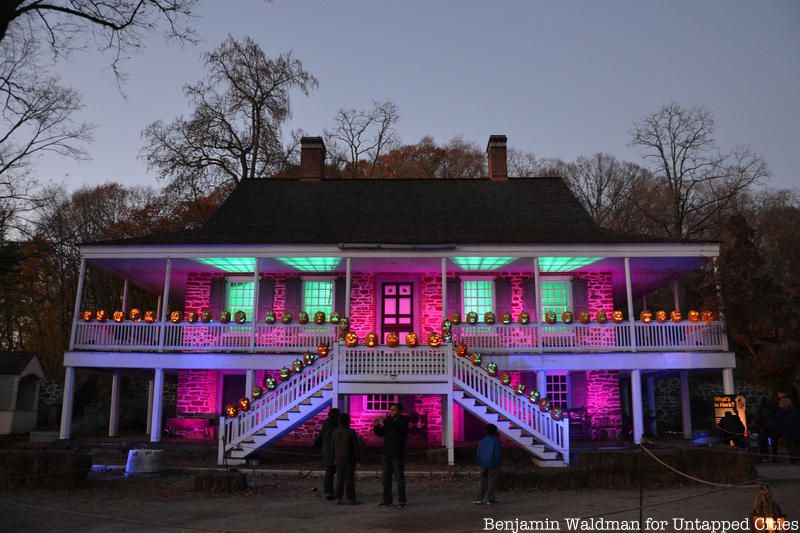
The late seventeenth-century Dutch Van Cortlandt Manor allows visitors to explore one of New York’s most prominent families. The estate remained in the Van Cortlandt family’s possession until the 1940s after which it was purchased and restored by John D. Rockefeller. Strolling along the gardens, Croton River, and an eighteenth-century ferry house provide a unique look at life in the years after the American Revolution.
Next, check out 10 Historic Mansions of Long Island’s Gold Coast and 10 Must-Visit Historical Sites in Dutchess County.
This article was updated by Nicole Saraniero in December 2022
Subscribe to our newsletter